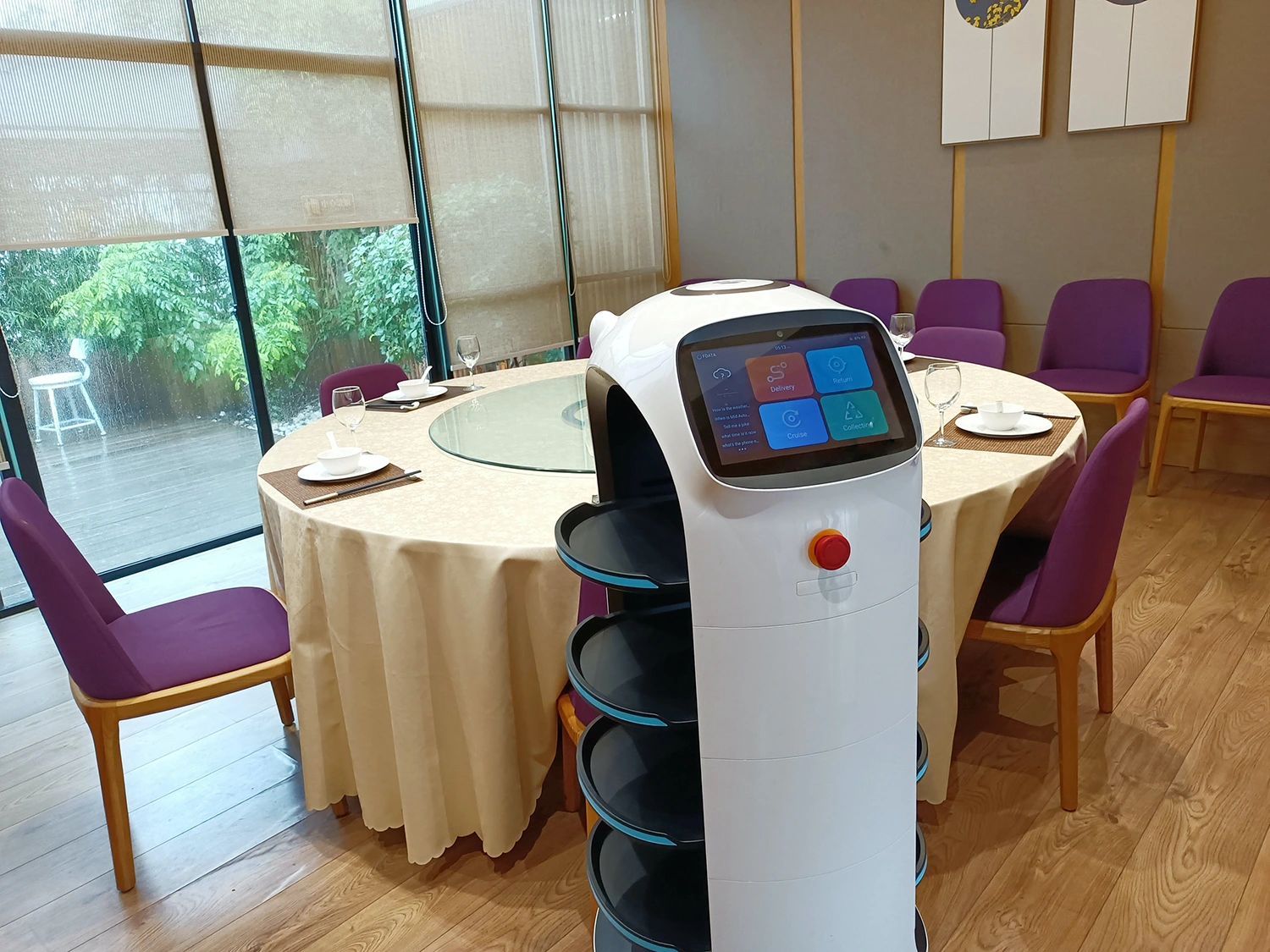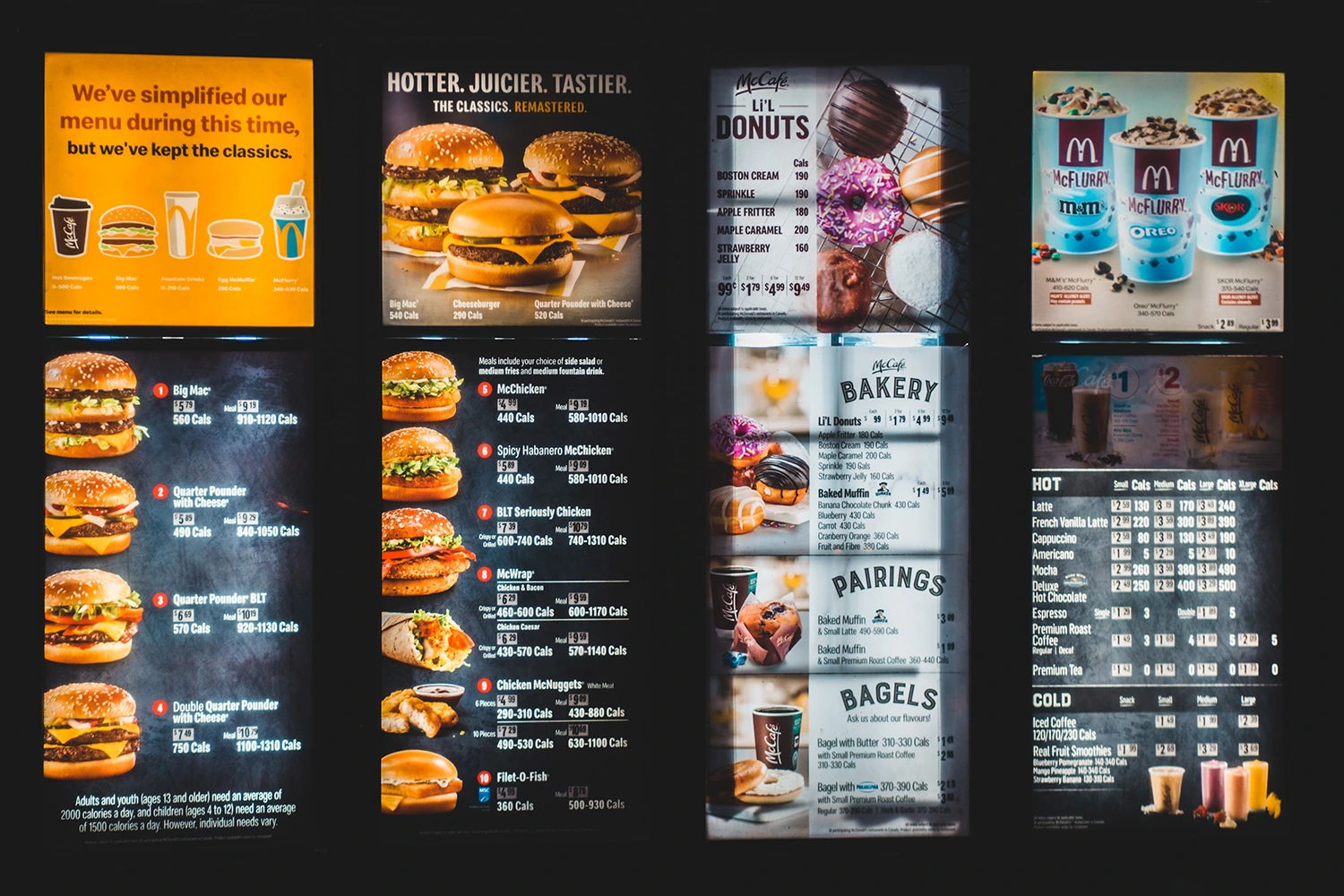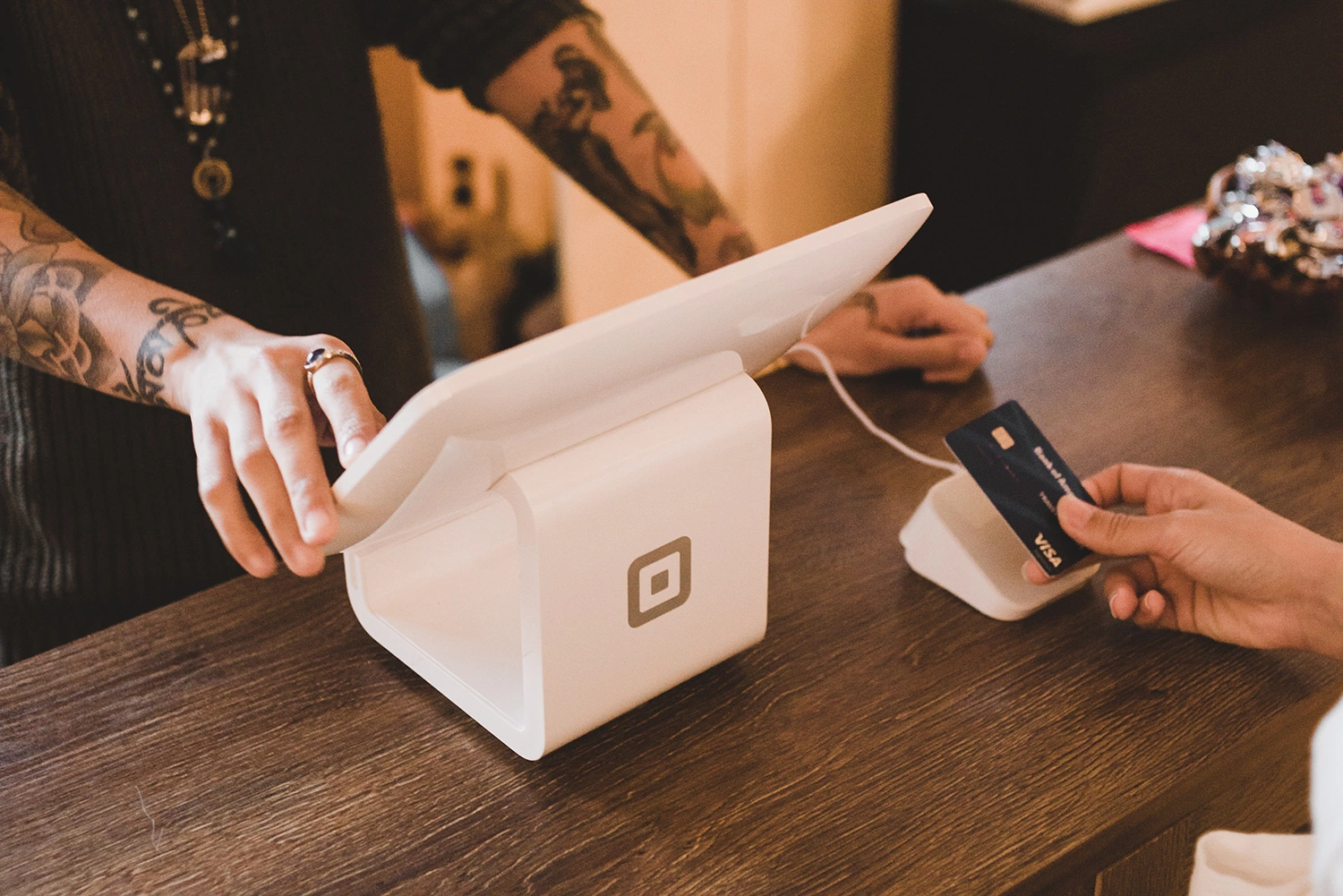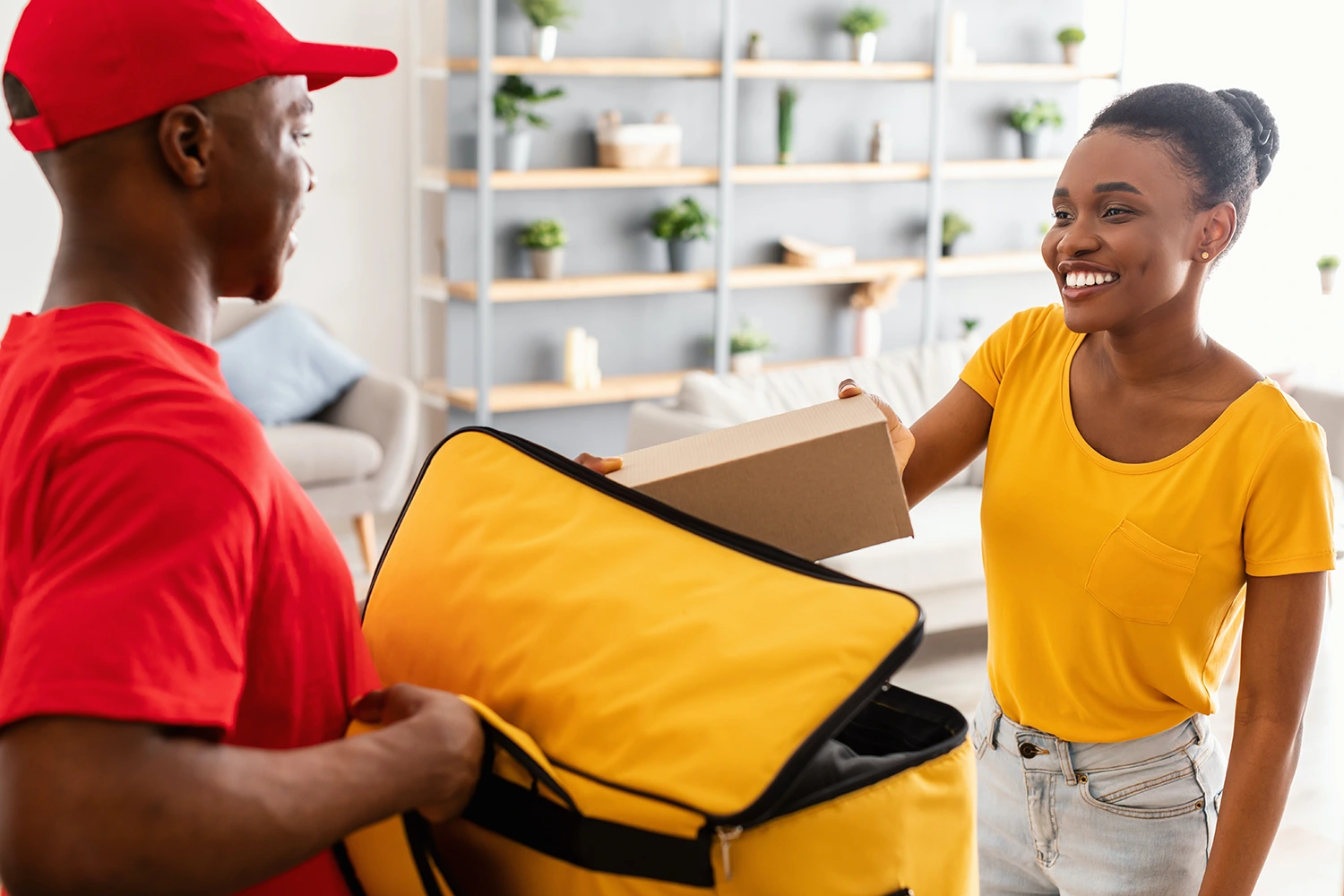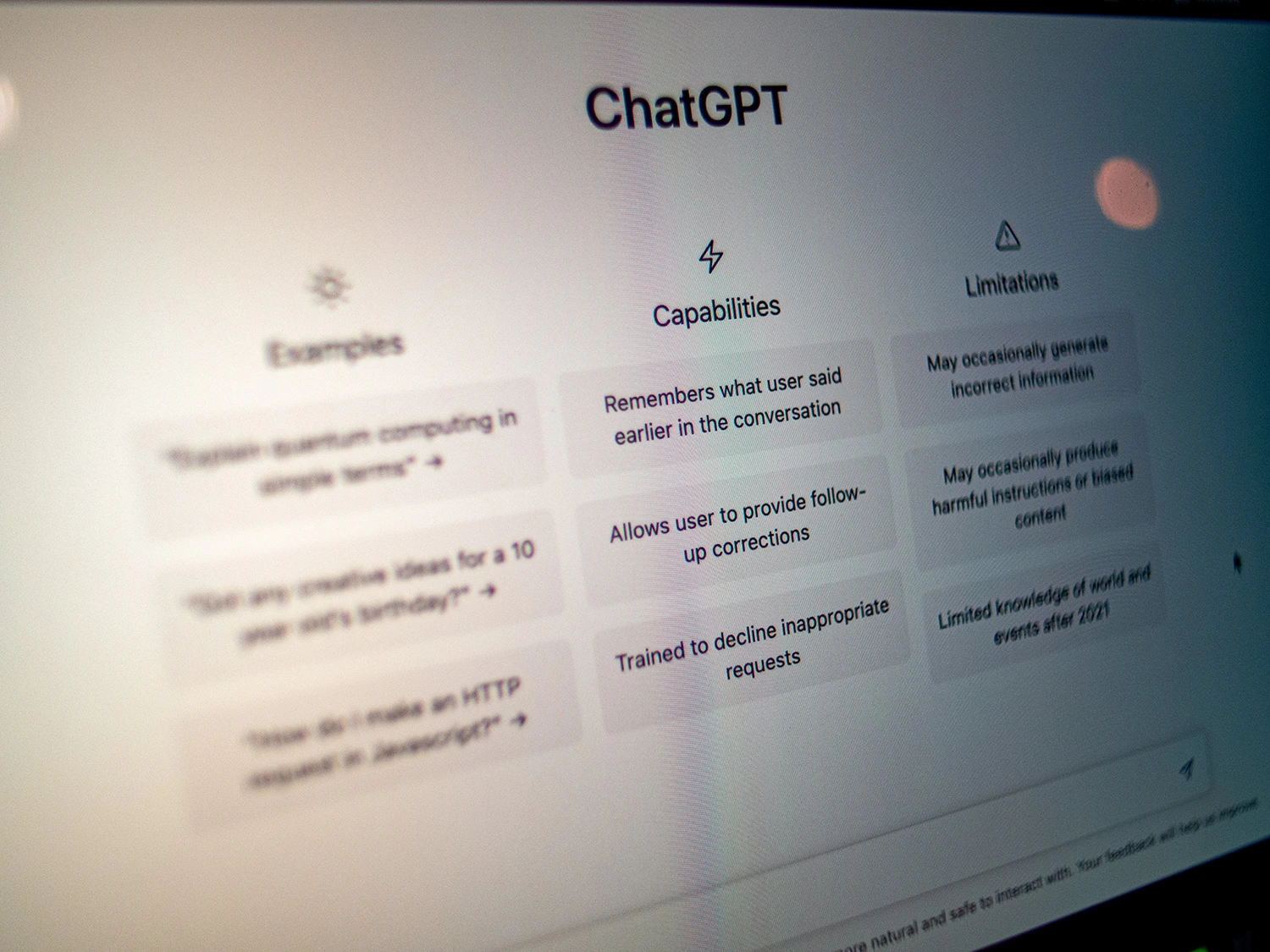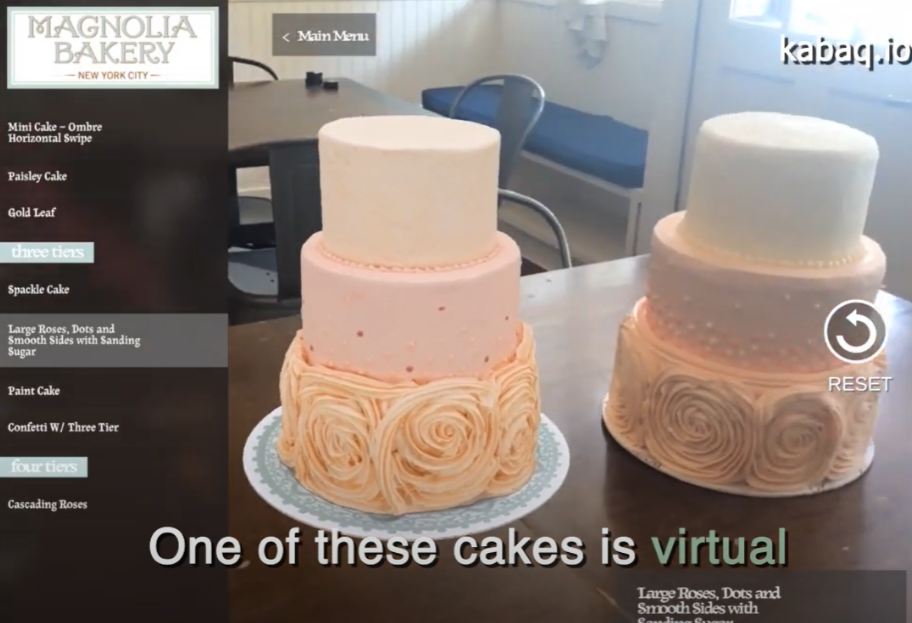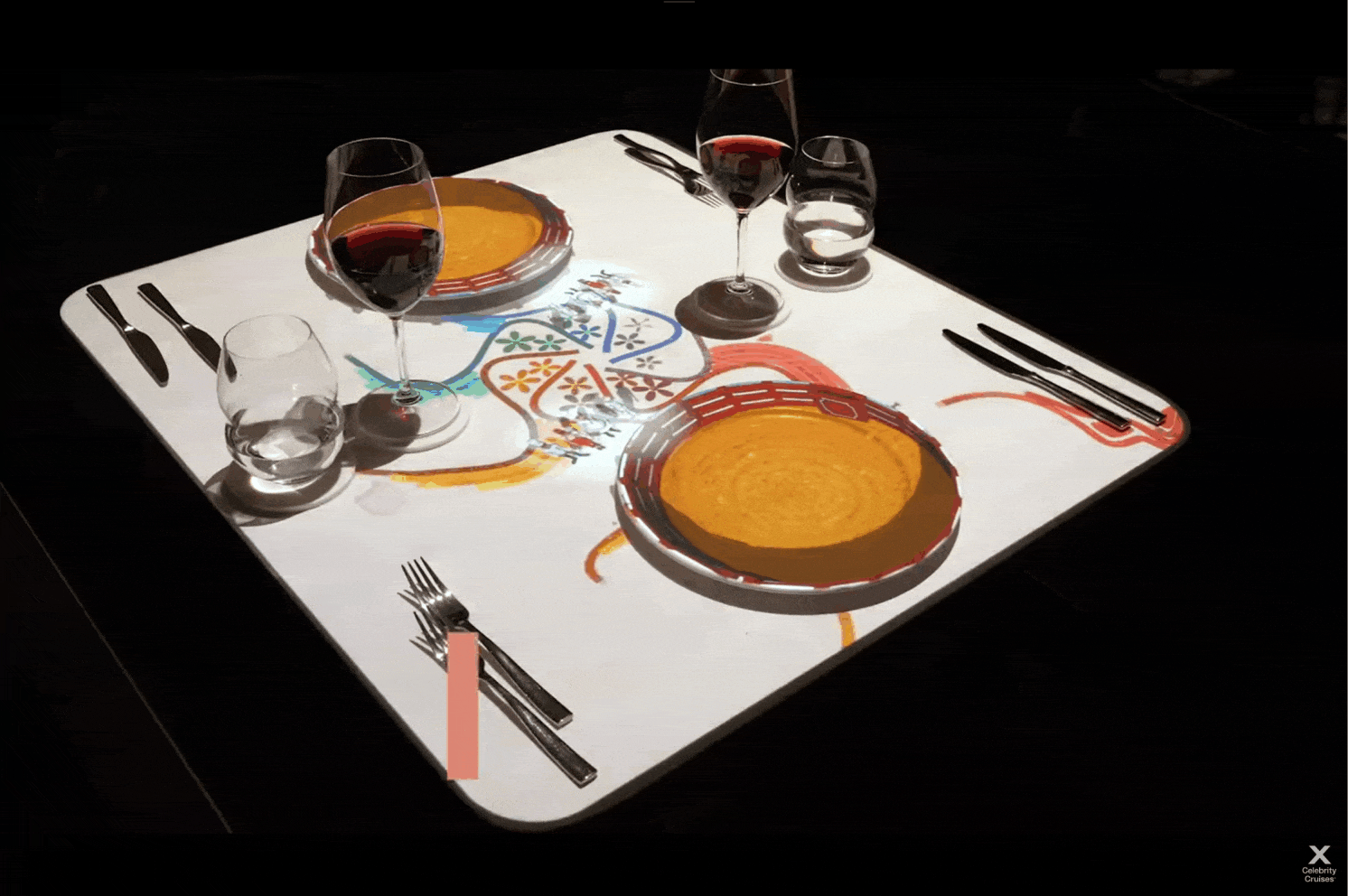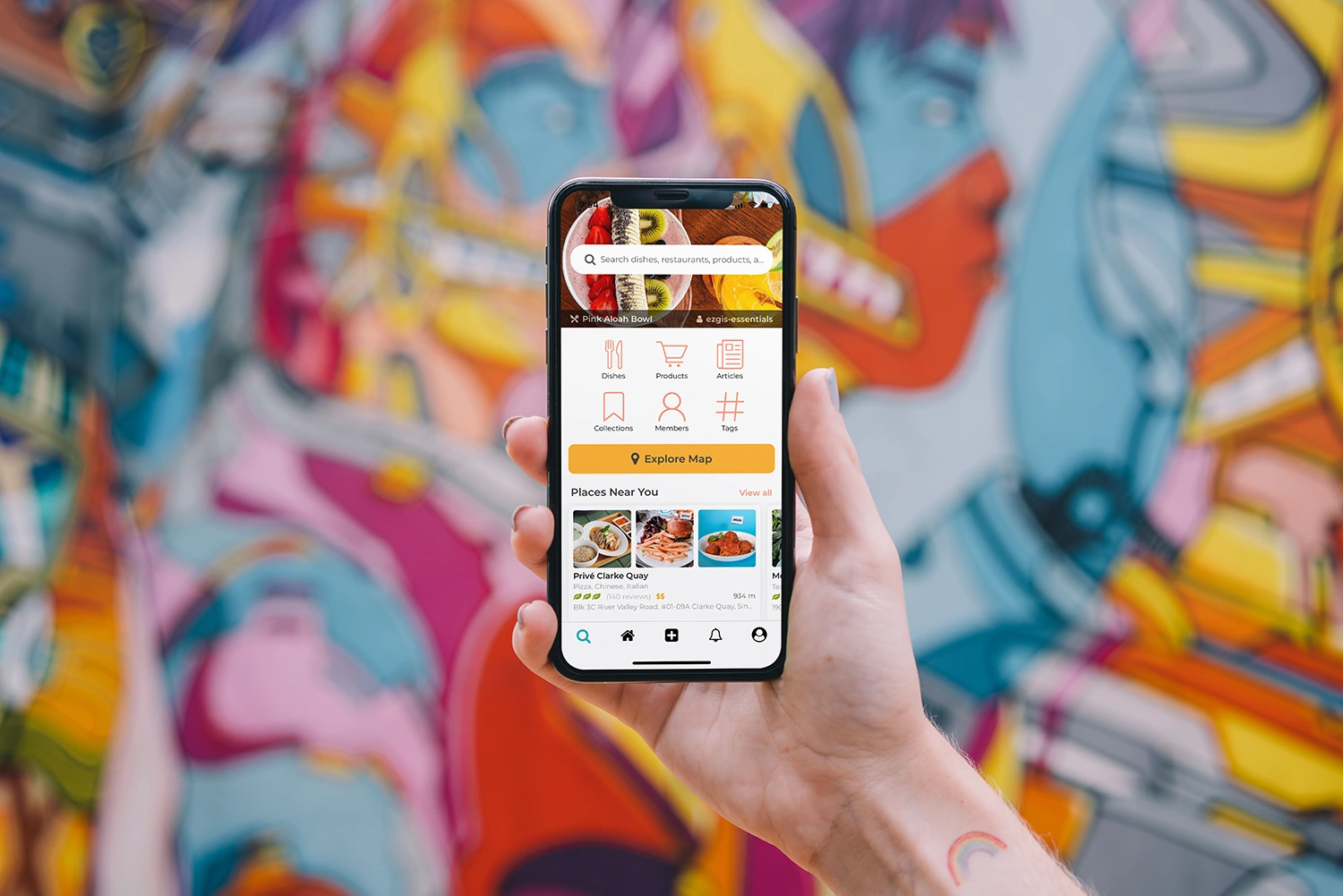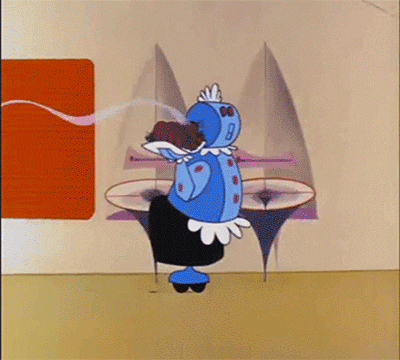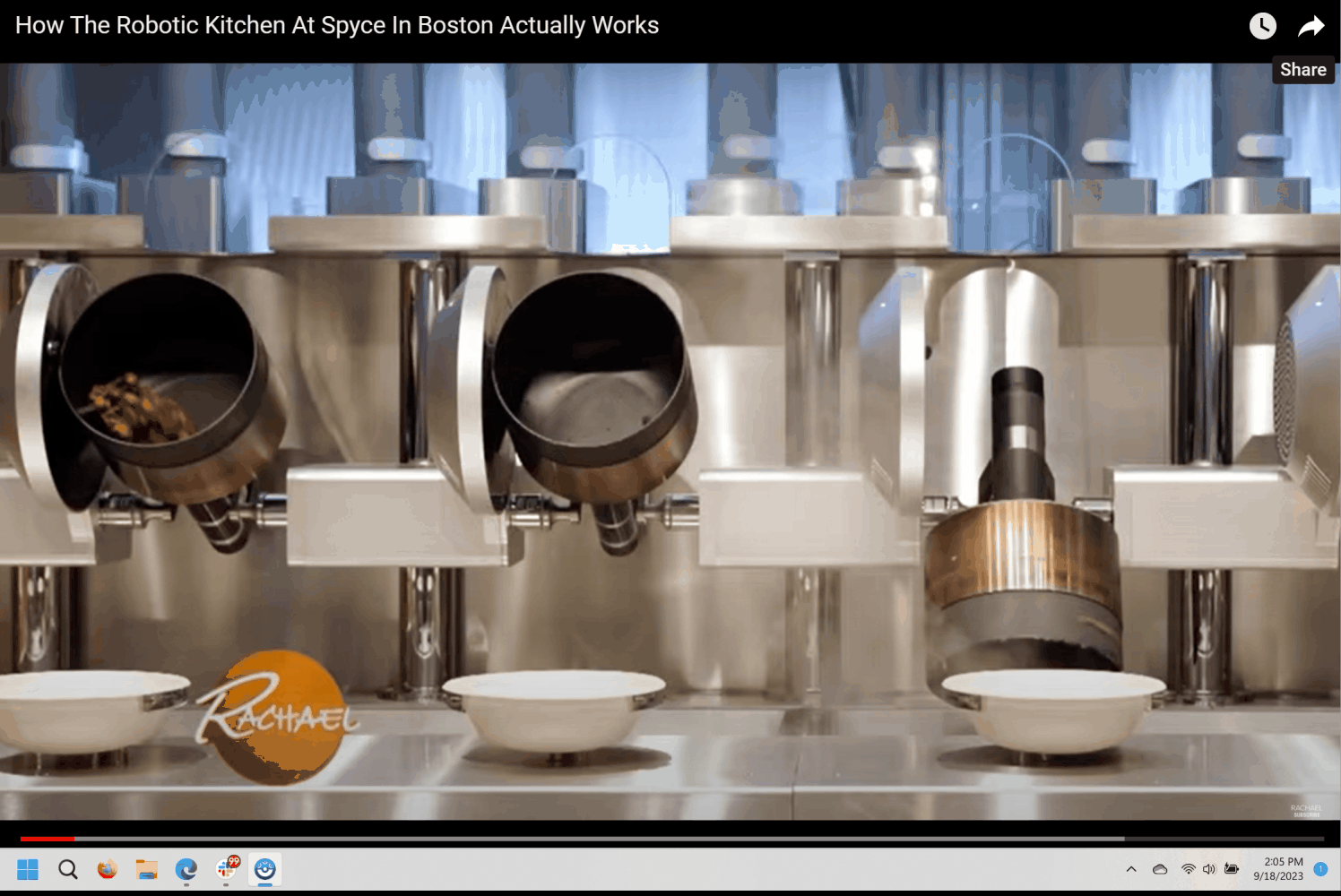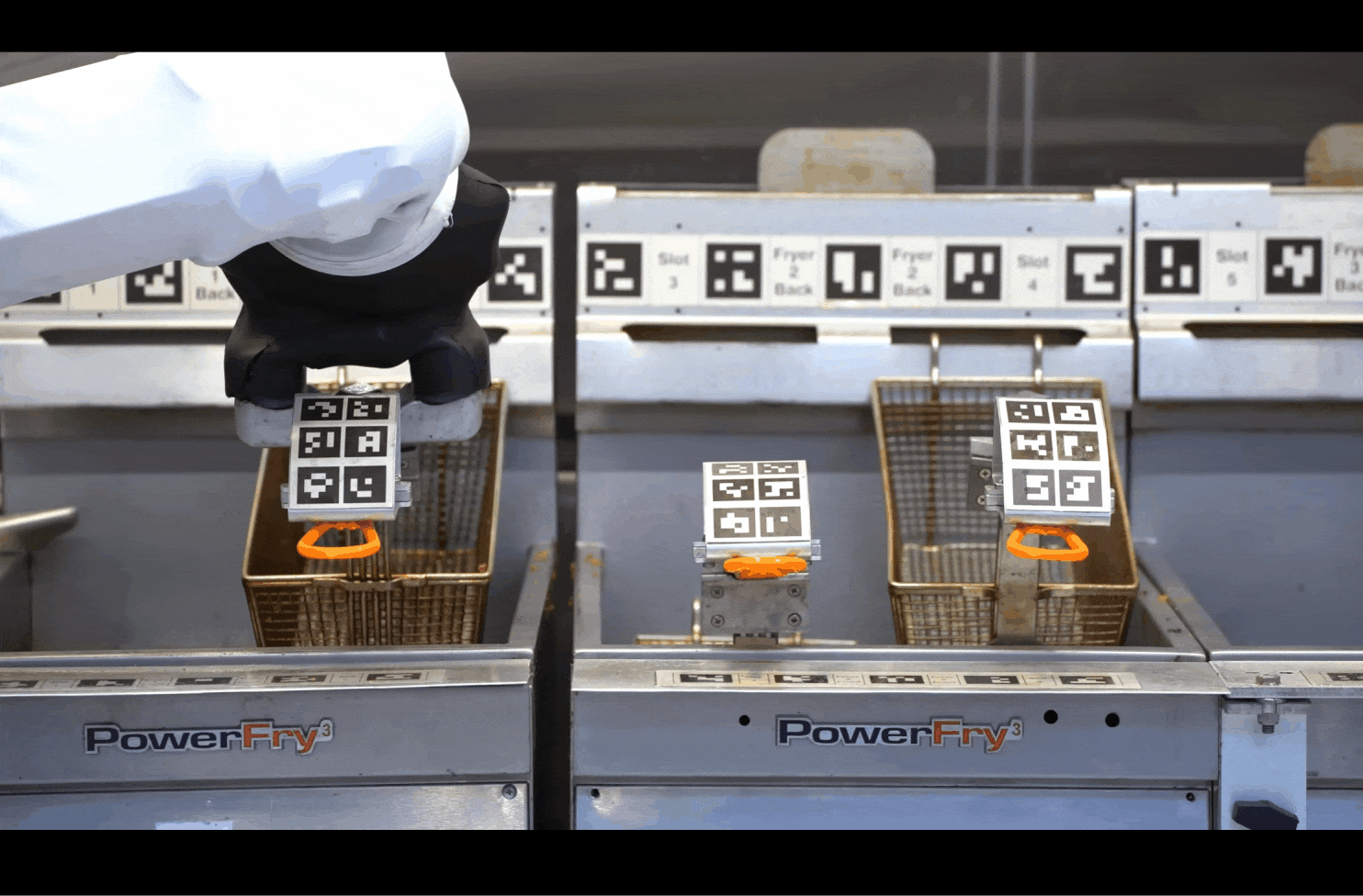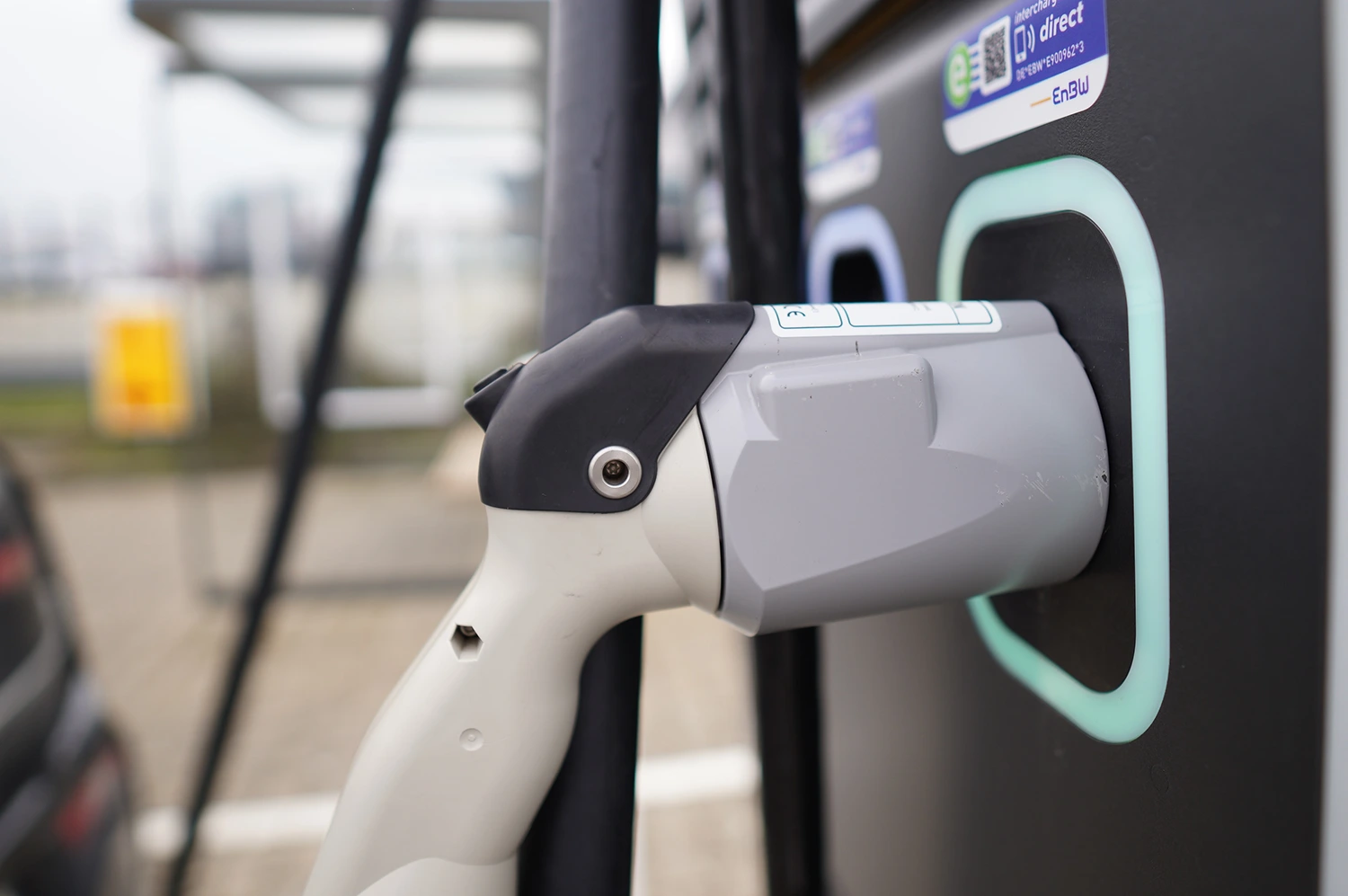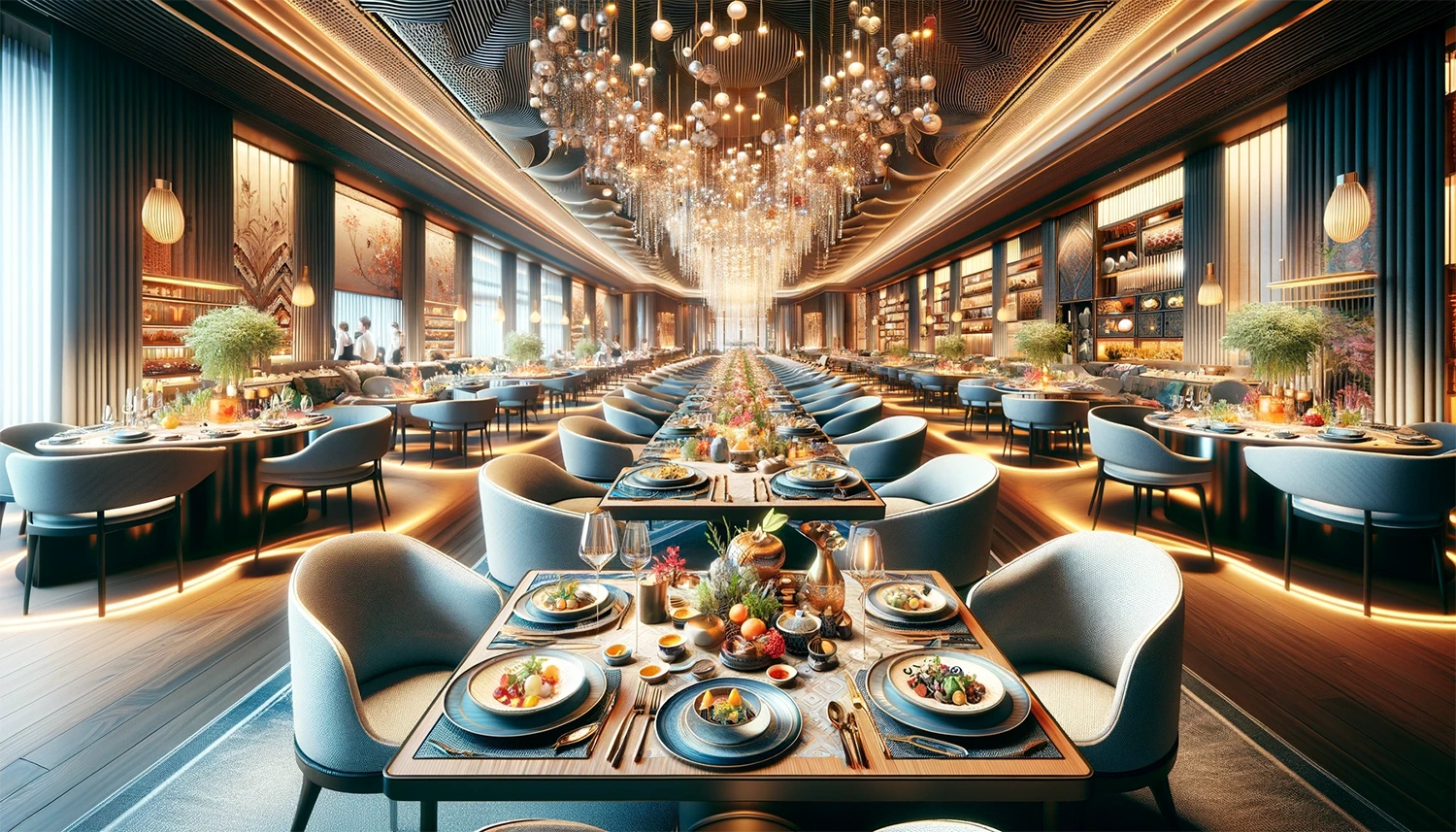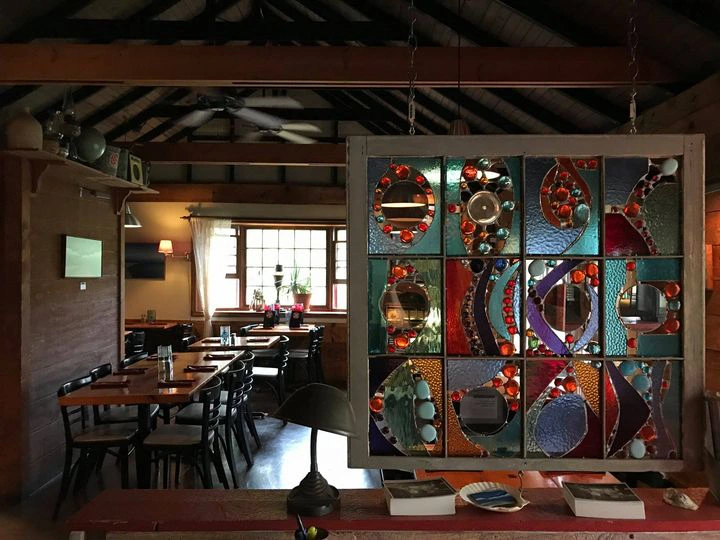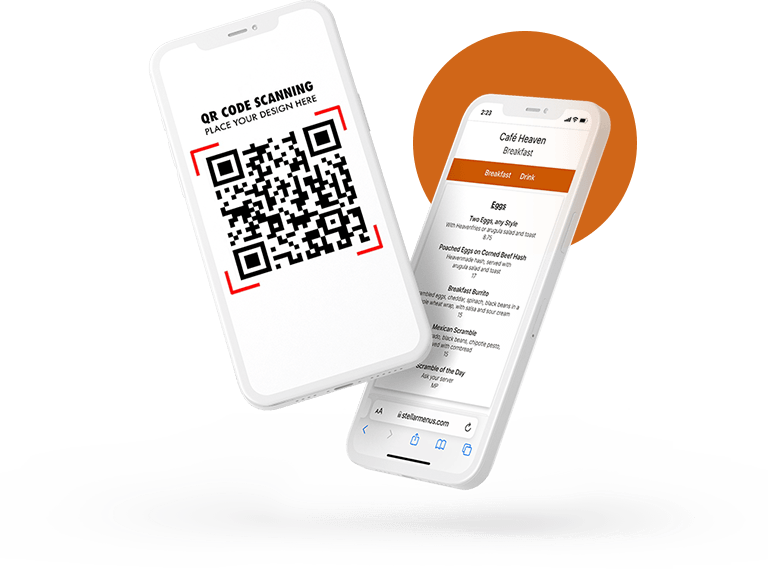Two statistics about restaurant technology caught our eye recently:
- 73% of restaurant diners agree that restaurant tech improves the guest experience.
- 95% of restaurateurs agree that restaurant tech enhances business efficiency.
Those stats tell us that restaurant technology is essential, yet the stats are from 2017. Six years have passed since then, a lifetime in technology years, which means technology is even more crucial as we move into the waning months of 2023.
From AI chatbots to contactless payment, restaurateurs are exploring technology in new and exciting ways to satisfy customers and streamline operations. With rising competition, focusing on the guest experience through innovative tech is more critical than ever.
In this post, we’ll talk about nine game-changing technology innovations that aim to create seamless, personalized encounters for your patrons and better results for you.
First up, digital menu boards.
1. Digital menu boards
Photo by Erik Mclean on Unsplash
Digital menu boards have been around for a while. They display vivid images and can change in real time to highlight promotional items or guide customers to more profitable orders. For example, McDonald’s uses digital menu boards to spotlight new products and high-margin combo meals during slow periods. You can also use digital menus to provide nutritional information and accommodate different languages.
Mvix, a provider of digital menu boards, has assembled an interesting set of statistics:
- 74% of restaurant patrons say an effective menu display is their top priority.
- Digital signs create an average increase of 3% in margin per transaction.
- Almost 30% of restaurant customers say digital menus are more likely to influence product purchases.
- After seeing items digitally promoted in a restaurant, eight out of 10 diners bought things they hadn’t planned to purchase.
Our Intelligent Menu Platform, while not a digital menu board, does allow you to present customers with beautiful, branded digital menus—but it also does much more. The software monitors the price of profit-driving ingredients and lets you know when it’s time to consider updating prices.
When you’re ready to change prices, click once. New prices immediately appear on your website, mobile, and paper menus. The system notifies you to reprint your paper menus and alerts your point-of-sale contact about the price change so they know to update the system.
2. Contactless payment
Photo by Clay Banks on Unsplash
Contactless payment options like Apple Pay, Samsung Pay, and tap-to-pay cards allow customers to tap their phone or card to complete a payment.
Statistics show that a significant number of people still prefer contactless payment even after the pandemic, driven by factors such as cleanliness, convenience, and speed:
- In a study by Visa, 63% of consumers said they’d choose a business offering contactless payment options over one that did not.
- A Mastercard survey in April 2020 found that 51% of Americans were using contactless payment.
- Another study by Entrust Datacard found that 75% of US cardholders preferred contactless cards as their primary payment method over chip insert, card swipe, mobile pay, and cash.
- Finally, a study by Cantaloupe showed that contactless payment methods made up nearly half of all cashless transactions in the first half of 2022.
River Café, a restaurant in London, recognized the importance of offering cashless payment methods. The company installed Unzer card terminals and has since been catering to the payment preferences of its customers, including 88.6% of 18 to 29-year-olds who say that cashless payment is essential in bars, cafés, and restaurants.
Another contactless payment option many restaurants have adopted is QR code ordering, where customers can scan a code on their table to view the menu and pay on their mobile devices.
3. Online ordering and delivery integrations
Online ordering and third-party delivery integrations have become increasingly important they help you stay competitive—and because diners want takeout and delivery. This set of statistics from Mad Mobile highlights the significance of these innovations:
- Online food ordering now accounts for almost 40% of total restaurant sales.
- Nearly 60% of restaurants generate more sales when they offer online ordering.
- Restaurants with online ordering increase to-go profits 30% more than those without.
- About 64% of diners prefer to order digitally on-premises at a quick-service restaurant.
Chipotle Mexican Grill successfully implemented online ordering and delivery services. In 2020, thanks to the pandemic, the chain saw a 174% increase in digital sales, which accounted for 46% of total sales. In the second quarter of 2023, digital sales still accounted for 38% of the chain’s food and beverage revenue.
Chipotle’s digital growth is a result of the expansion of its delivery partnerships, the launch of the Chipotle app, and the introduction of Chipotlanes, drive-thru lanes dedicated to mobile order pickups.
4. Customer relationship management systems
Customer relationship management (CRM) systems allow restaurants to collect guest data and order history to personalize the experience.
Brotzeit, a leading German casual dining franchise with 13 outlets in five countries, is an example of a restaurant that added a CRM system with excellent results. The CRM pulled together disparate data from multiple reservation and loyalty systems. It also helped the group track item-level diner spending and tap into guest sentiment by automatically sending surveys to guests after each dining experience.
The results, published in a SevenRooms case study, speak volumes:
- Bortzeit sent more than 81,000 survey emails in the first year.
- Each email generated an average of $2.40 in incremental revenue.
- Collectively, the emails generated $213.5K in additional revenue.
It’s no wonder that CRM is the largest and fastest-growing software market, with an expected global revenue of $114.4 billion by 2027. Companies that use CRM systems have seen a 17% increase in lead conversions, a 16% boost in customer retention, and a 21% improvement in productivity.
The increasing importance of CRM in customer retention and lead generation has led to businesses of all sizes—including restaurants—adopting CRM systems to manage customer relationships better and streamline their marketing and sales efforts.
5. AI-powered chatbots
Photo by Emiliano Vittoriosi on Unsplash
Chatbots powered by AI and natural language processing can handle customer inquiries, process orders, book reservations, and more.
One example of a restaurant using AI-powered chatbots and experiencing positive results is Popeyes. To give customers a better, more consistent experience at the drive thru, the chain launched a voice chatbot named Tori at a restaurant in Louisiana. The chatbot performed with 99.9% order accuracy, among other excellent results:
- Service speed increased by 20%.
- Drink sales increased by 150%.
- Customer satisfaction increased by 20%.
In a statement, Nick Belsito, founder and CEO of OpenCity, the voice AI ordering platform, said he’s excited about the future. “Seeing everyone engage with Tori, smiling and enjoying their experience as Tori accurately takes their orders, further validates the future is now for the drive-thru experience. This is only the beginning, as Tori will be coming soon to a drive thru near you.”
Wendy’s is also experimenting with conversational AI to speed things up for customers at the drive thru. Its chatbot program, FreshAI, can chat with customers, answer frequently asked questions, understand made-to-order requests, and even offer upsells.
You can use AI chatbots like ChatGPT in your restaurant, too, even for basic business tasks—such as naming and describing dishes creatively. To learn how to do it, read our blog post that walks you through using several AI tools to generate creative names for your menu items. Then, use our free AI Menu Description tool to quickly write compelling descriptions for those items. Congrats! Just like that, you’re part of the AI revolution.
6. Augmented reality
Another way to boost satisfaction and improve results is to use augmented reality (AR) to give guests immersive, interactive dining experiences.
One example of a restaurant using augmented reality with success is Magnolia Bakery in New York City.
The bakery partnered with Kabaq, a New York City startup, to bring AR technology to its catering segment. Using the technology, customers can see life-sized, virtual renderings of products, pinch in and out, rotate, and otherwise explore virtual models of the bakery’s delights, even diving into ingredients and nutrition information, enhancing the overall experience.
Another example of a restaurant using augmented reality is Le Petit Chef, an augmented-reality dining experience offered by Celebrity Cruises.
Le Petit Chef provides a unique, immersive dining experience, where an animated 3-D character appears on guests’ plates and—right before their eyes—prepares each course they’ll be enjoying. This innovative approach to fine dining combines entertainment and culinary art, creating a memorable guest experience.
Among one group of statistics, we found that 70% of consumers between 16 and 44 are aware of AR, and almost 69 million American users interact with augmented reality at least once a month.
The takeaway? If your customers are American and between 16 and 44, perhaps augmented reality should be in your restaurant’s future.
7. Mobile apps
Did you know?
- 79% of people have a restaurant app on their mobile devices.
- 67% of US diners prefer using a restaurant’s app or website for food delivery.
- Mobile devices place 60% of all digital restaurant orders.
- 92% of top-performing restaurants offer mobile order-ahead and loyalty rewards programs or a combination.
These statistics indicate that mobile apps are becoming increasingly important for restaurants to meet customer expectations and stay competitive.
One example of a restaurant with a complex yet successful mobile app is Domino’s Pizza. Domino’s has been a pioneer in the restaurant industry in using technology for a better customer experience. Its mobile app offers many features, such as customizing pizza orders, tracking delivery progress, locating nearby stores, and making in-app payments.
Domino’s has also experimented with innovative features like 3D imaging technology to make the menu look more realistic and enhance the user experience.
More recently, the company introduced Domino’s Pinpoint Delivery feature, which allows customers to receive their pizza orders virtually anywhere, including parks, baseball fields, and beaches.
After a redesign, Domino’s app has successfully retained customers and increased conversion rates, with a 23% increase in conversion rate post-redesign. The company attributes this success to the app’s user-friendly interface, engaging features, and seamless operations integration.
Pizza, anyone?
8. Food robots and automated food preparation
Although automated food prep tech still feels futuristic, like flying cars and Rosie Robot serving dinner at the Jetsons, it is undoubtedly the future.
Some restaurants are adopting automated food preparation systems, such as robotic chefs and automated cooking appliances, for consistent food quality and to reduce wait times.
Consider the salad chain Sweetgreen, which bet on automation by acquiring Spyce, the world’s first restaurant with a robotic kitchen. The kitchen uses robots and a conveyor belt to cook and serve warm bowls and salads without human intervention.
The full video demonstration on YouTube shows how the Spyce technology works.
Another example of a restaurant using automation with success is White Castle. Following a successful pilot program, White Castle installed Flippy, a robotic kitchen assistant that does the work of an entire fry station, in 100 of its restaurants.
In a statement, Mike Bell, CEO of Miso Robotics, said he and his team couldn’t be more grateful for the partnership. “White Castle was the first large brand to embrace our technology, and we are thrilled that our Flippy pilot made such a positive impact on their operations that they want to integrate 100 more,” he said. “We can’t wait to continue on this journey with such an outstanding partner.”
Although there are fears that restaurant technology will harm the industry by disrupting the lives and livelihoods of millions of low-wage workers, fear has yet to stop technological progress. Robotics and automation are coming, and the earliest adopters will benefit most.
9. Technology from other industries
Photo by Sophie Jonas on Unsplash
Restaurants can also take advantage of technology other than restaurant tech. Consider Subway’s recently announced plans to install electric vehicle (EV) charging stations at select new or newly remodeled restaurants.
The Subway Oasis initiative includes charging parks with multiple ports, picnic tables, Wi-Fi, restrooms, green space, and playgrounds. By offering charging stations and extra amenities, Subway will offer added convenience for on-the-go guests and generate incremental revenue for franchisees.
Another example of a restaurant using technology from other industries is Nekter Juice Bar in Mesa, Arizona. The restaurant partnered with Flyby Robotics, which launched its first delivery-by-drone trial run in Mesa after raising $4 million in seed investment funding. Flyby Robotics partnered with other Mesa restaurants, including MAD Greens, Tokyo Joe’s, and Popadelics, to kickstart the trial. The drone system upholds food quality during the entire flight and delivery, with an average delivery time of four minutes.
Jason Lu, founder and CEO of Flyby Robotics, said in an interview with AZFoothills.com that you don’t have to be a multibillion-dollar corporation or global military superpower to reap the economic benefits of autonomous drones. “Our AI-powered autonomous systems allow any merchant to dramatically reduce the cost of delivery to their customers,” he says.
What’s next?
Adopting the right technology can pay big dividends for your restaurant through improved customer satisfaction and increased sales. Whether you start small with an AI-powered pricing and menu management solution like Stellar Menus or go big with a robotic kitchen, satisfaction-enhancing technologies provide a great way to run an efficient, profitable restaurant business in today’s digital era.
Have you explored the Stellar Menus Intelligent Menu platform? If not, request a demo. We’d love to show you how it works to protect your margins and please your patrons.

